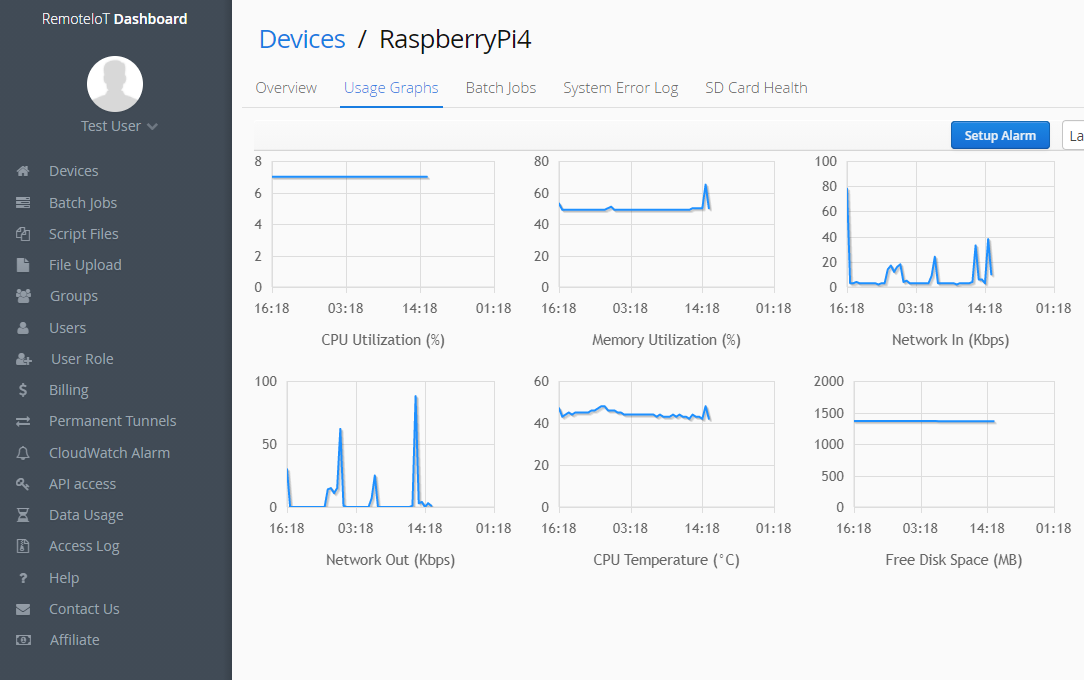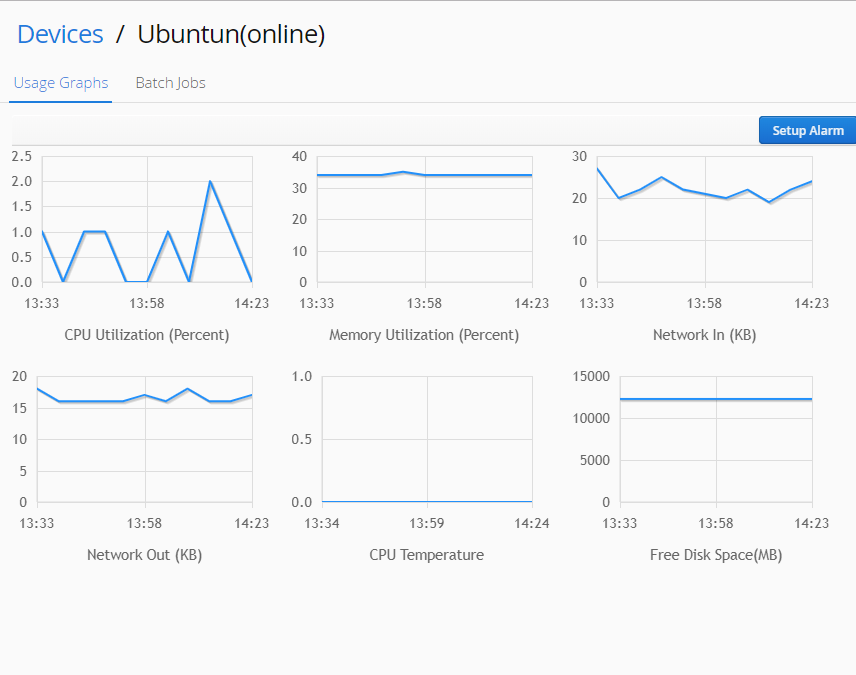
Entering the single-board computer virtually can be notably advantageous, nevertheless it additionally brings possible safety difficulties. To mitigate mentioned dangers, deploying proper firewalls and mastering how Network Address Translation (NAT) runs is necessary. A firewall acts as a wall between one's Pi and the outside world, facilitating you to govern incoming and outgoing traffic based on predefined rules. By modifying your firewall to only accept trusted connections, you can significantly enhance the security of your device.
NAT gateways are another major element in remote access security. They provide private IP addresses to devices within your network and present a single public IP address to the outside world. This process helps to conceal the internal network structure, making it trickier for attackers to discover individual devices. By harnessing both firewalls and NAT routers, you can create a secure and robust remote access solution for your Raspberry Pi.
Utilizing IoT Devices from Outside the Firewall
The sector of Internet of Things (IoT) offers unprecedented opportunities for regulation, but it also brings unique complications. One key problem is securely accessing these devices from faraway locations. Traditional firewalls, designed to protect networks from external threats, often limit access to IoT endpoints, hampering the full potential of connected technologies. To overcome this challenge, innovative strategies are emerging.
- Online platforms allow for protected access to IoT devices, enabling users to observe them from anywhere with an internet gateway.
- Shielded Access solutions create a encrypted tunnel between the user's device and the IoT network, safeguarding data during transmission.
- Multi-Factor Authentication protocols enforce strict access controls, substantiating the identity of users before granting them access to specific devices.
By embracing these tools, organizations can leverage the full benefits of IoT while ensuring the safeguarding of their valuable data and systems.
Closing Distance: Connecting to Raspberry Pis Behind Network Address Translation (NAT)
Network Address Translation (NAT) can sometimes pose a hurdle when trying to access your Raspberry Pi from outside your local network. While NAT effectively masks private IP addresses, it can make direct connections troublesome. Fortunately, there are several solutions to bridge this gap and enable seamless remote access to your Raspberry Pis.
- One common approach is to utilize a Dynamic DNS service, which provides a constant hostname for your Pi that updates automatically even when its IP address changes.
- Another option is to set up port forwarding on your router, allowing specific ports on your Raspberry Pi to be mapped to public IP addresses. This method requires careful configuration and understanding of network protocols.
- For more secure access, consider implementing a VPN (Virtual Private Network). A VPN encrypts your connection and routes it through a secure server, masking your real IP address and providing an extra layer of protection.
By exploring these strategies and selecting the most appropriate solution for your needs, you can effectively bridge the gap created by NAT and gain reliable remote access to your Raspberry Pis, unlocking their full potential from anywhere with an internet connection.
Remote Management: Getting to IoT Devices Through Firewalls
Remote access involving IoT devices frequently be a challenge when encountering firewalls. These security measures intended to protect your network can sometimes prevent your ability to control your intelligent devices from afar. However, grasping the principles behind firewall operation and implementing specialized configurations can unlock a secure pathway for remote access.
One standard approach is to assemble port forwarding rules. This requires directing specific IP addresses and ports to your IoT device, effectively establishing a direct connection. Another method employs VPNs (Virtual Private Networks). By establishing a secure tunnel between your device and the network where your IoT device resides, you can bypass firewall restrictions and gain access to your devices remotely. It's essential to remember that implementing these solutions involves a thorough understanding of your network infrastructure and security protocols to copyright the integrity and safety of your system.
- Leverage strong passwords for your router and IoT devices.
- Often update firmware on your router and IoT devices to resolve security vulnerabilities.
- Switch off any unnecessary services or ports on your router.
Governance of Firewalls for Remote Raspberry Pi Management
Remotely administering your Raspberry Pi is capable of be a powerful way to maximize its capabilities. However, firewalls are crucial for ensuring the security of your device. Properly setting up firewall rules enables you to control incoming and outgoing network traffic, preventing unauthorized connections. Understanding how to configure these settings is vital for safeguarding the integrity of your Raspberry Pi.
- Use a firewall software solution designed for Raspberry Pi. Numerous options are available, each with its own set of attributes.
- Create clear rules that indicate which ports should be open and which should remain restricted.
- Consider the use of a VPN for an extra layer of shielding when interacting remotely.
Don't forget that firewall policies must be tailored to your specific specifications.
Comprehensive Guide to IoT Remote Access and NAT
Effectively administering your Internet of Things (IoT) devices from a remote location presents unique challenges. NAT (Network Address Translation), commonly used in home and small office networks, can complicate this process. This guide will delve into the essential steps to securely access and control your IoT devices behind a NAT firewall.
- At the start, establish a secure connection between your remote device and your local network using a reliable VPN protocol like OpenVPN or WireGuard.
- ,Furthermore, configure port forwarding rules on your router to allow incoming network calls to the specific ports used by your IoT devices. Ensure you only forward traffic to the required ports and use strong passwords for authentication.
- ,Finally, consider implementing multi-factor authentication (MFA) for added security when accessing your IoT devices remotely. MFA adds an extra layer of protection by requiring multiple forms of verification, such as a password and a unique code sent to your phone.
By embracing these best practices, you can safely and securely control your IoT devices from anywhere with an internet connection.
Defending Remote Access to Your Raspberry Pi
Hoping to manage your Raspberry Pi beyond your local network? A firewall is essential for safely enabling remote access. It acts as a gatekeeper, blocking unauthorized access while allowing accepted requests through. By implementing proper firewall configurations, you can ensure your Pi remains secure even when accessed remotely.
Begin by identifying the services you need to expose externally. Samba are common examples. Configure your firewall to enable inbound packets on the specific ports used by these services. Remember, a well-configured firewall will only open the necessary doors, reducing potential vulnerabilities.
- Apply a robust firewall software package designed for Raspberry Pi, such as UFW or iptables.
- Customize strong passwords for your remote access accounts.
- Systematically review and update your firewall rules to address any changes in your platform.
Utilize Remotely to Raspberry Pis Through Firewalls and NAT Routers
Securing your Raspberry Pi within a network environment often involves traversing firewalls and Network Address Translation (NAT) routers. This can seem daunting at first, but understanding these components is crucial for safely connecting to your device from afar. This guide provides an in-depth walkthrough of common techniques for remote access, empowering you to interact with your Raspberry Pi effectively regardless of its physical location.
We'll delve into the fundamentals of firewalls and NAT, outlining their roles in network security. Then, we'll explore various methods for establishing secure connections, including SSH tunneling, VPNs, and port forwarding. Besides, we'll provide practical steps and examples to help you implement these techniques on your own setup.
By mastering the art of remote access, you can unlock a world of possibilities for your Raspberry Pi projects, enabling you to monitor performance, analyze issues, and even control your devices remotely.
Trustworthy Remote Access for Your Raspberry Pi
Planning to log into your Raspberry Pi from afar? Follow these instructions to set up secure remote access. First, find a suitable protocol like SSH or VNC. Next, activate the necessary software on your Pi. Build a strong password and enable two-factor authentication for added security. Then, route the required ports on your router to your Pi's IP address. Finally, test your connection from a remote device.
- Employ firewalls to protect your Raspberry Pi.
- Keep your software up-to-date to patch vulnerabilities.
- Review your system logs for suspicious activity.
From Home Network to the World: Remotely Controlling Your Raspberry Pi Across Firewalls
Your embedded computer can be much more than just a local project. With the right setup, you can control it from anywhere in the world, regardless of firewalls or distance. This opens up a universe of possibilities - managing your home automation, accessing data remotely, or even running remote server services directly from your Pi.
While this may seem daunting at first, setting up remote access for your Raspberry Pi is surprisingly straightforward. You'll need to configure your network settings, set up a secure connection, and choose the right tools for controlling your device remotely. Here are some fundamental guidelines to get you started:
* First, ensure your home network is configured properly. This includes setting up port forwarding rules to allow access to your Pi from outside your local network.* Next, choose a secure connection protocol like SSH or VPN. These protocols encrypt your communications and protect your data from interference.* Finally, select a remote control tool that suits your needs. Popular options include VNC for graphical access, SSH clients for text-based interaction, and cloud-based platforms for simplified management.
Once you've taken these steps, you can enjoy the freedom of controlling your Raspberry Pi from anywhere with an internet connection. This opens up a world of possibilities for learning, experimenting, and building impressive projects.
Connecting IoT Devices Beyond the Local Network: Firewalls and NAT
Extending the reach of Internet of Things (IoT) devices external to the confines of your local network requires careful consideration of security mechanisms. Firewalls serve as crucial guards, meticulously scrutinizing incoming and outgoing traffic to counter potential threats. Network Address Translation (NAT), on the other hand, allows multiple devices on a private network to share a single public IP address, improving network efficiency and covering internal identifiers.
By implementing robust firewall configurations and employing NAT effectively, you can create a secure and smooth environment for your IoT ecosystem to thrive. This combination of technologies ensures that your devices can securely connect with the wider internet while holding protected from malicious actors.
- Implement comprehensive firewall rules to accept only trusted traffic.
- Utilize NAT to hide internal device addresses.
- Analyze network activity for any suspicious behavior.
